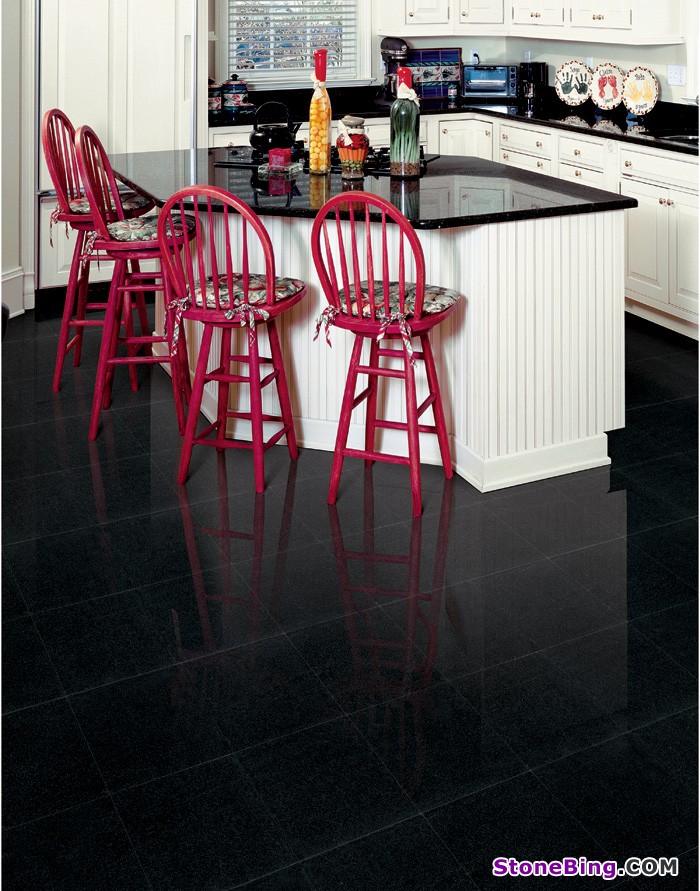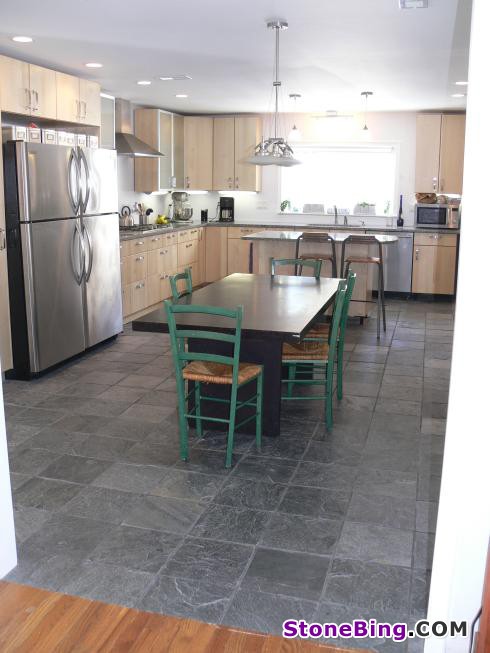And second, natural stone fits in seamlessly with modern design. This is a contradiction that you can really appreciate, proving that sometimes it’s the materials we’ve counted on all along that make the most sense in the spaces which are the most important to us.
But, it should be noted that not all natural stone can be treated in exactly the same way. Within that subset of material, there is vast variation to be considered. So, with this in mind, I’ve gathered some information around 6 types of natural stone commonly used in residential settings, most notably in places like kitchens and bathrooms. These are areas that are typified by concentrated foot traffic, moisture, and (at times) falling objects, too. So, with these common factors in mind, take a look at some of the origins, appearances, uses, advantages, and challenges of each.
Granite
Origin: Granite is an igenous rock, which means that it is the result of molten rock that has cooled in subterranean pockets until it’s solid. Colors of granite depend on the sundry minerals trapped and suspended inside the molten rock during this process. It’s these sundry materials that give granite an incredible density and stability. Granite is one of the hardest materials on earth.
Appearance: The color range of granite is incredibly varied, from absolute black to white leopard, to golden yellow, and beyond. Indeed, granite offers subtle blues, greens, and grays that are commonly popular selections for all kinds of surfaces in residential and commercial settings. Thanks to high quartz content in all granite, the speckle patterns makes granite in general a distinctive stone type.
Effects: Granite tile is known for its no-nonsense, professional air. As such, it’s been used in hallways and foyers all over the world as flooring and as wall cladding to make a good first impression in commercial towers and hotels. It also creates a look of elegance in residential settings, too.
How to use granite: Floor tile, wall cladding, backsplashes, tile-based countertops, bathroom vanities, cutting boards, coasters.
Advantages: high-end professional look, supreme hardness
Challenges: Granite is very hard, so it’s difficult to cut without experience and the right equipment. You may have to get special tools to cut it, or (better yet) get a professional if you plan on-site cutting. It’s also pretty heavy, which is another reason to get professional advice, and to make room in your budget for a professional installation.

Slate
Origin: When coastal soil, clay, and other minerals are compressed and heated over millions of years, the result is what is known as slate. Slate demonstrates a rough-hewn beauty, that is also helpfully naturally slip-resistant too.
Appearance: Slate tile is of varying surface thickness, which is why it is so slip resistant and appealingly contoured. It’s generally calibrated (has a flat backing) and squared (the edges are at right angles), which makes it relatively straight-forward to install as natural stone tile goes. You have a number of finishes to choose from with slate, from a flat finish to a high sheen finish for that classic ‘wet’ look. Color variation in slate is a big theme you’ll notice, even from batch to batch. But, you can work this to your advantage when it comes time to creatively lay out each tile.
Effects: Slate tile is used extensively as an interior flooring surface all over the house, with a rustic, casual, and welcoming effect.
How to use slate: Flooring, wall cladding, patios and pool surrounds (temperate climates only).
Advantages: Natural slip-resistance, wide color range even in the same batch.
Challenges: Slate is heavy, so be careful if heavy lifting is a problem. Also, be sure to ask your vendor about exterior use of slate tile in relation to your specific climate. Slate won’t thrive in certain climates.








